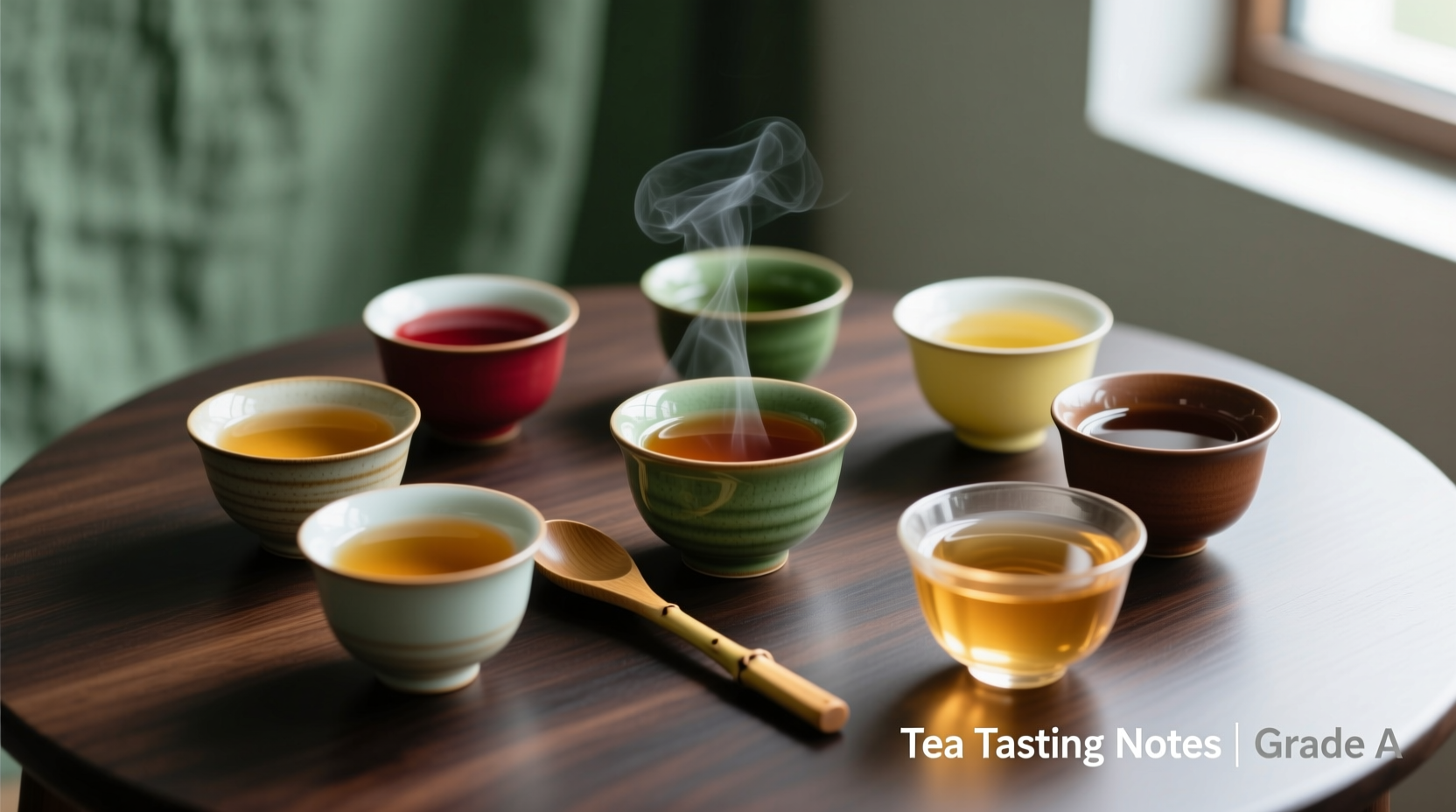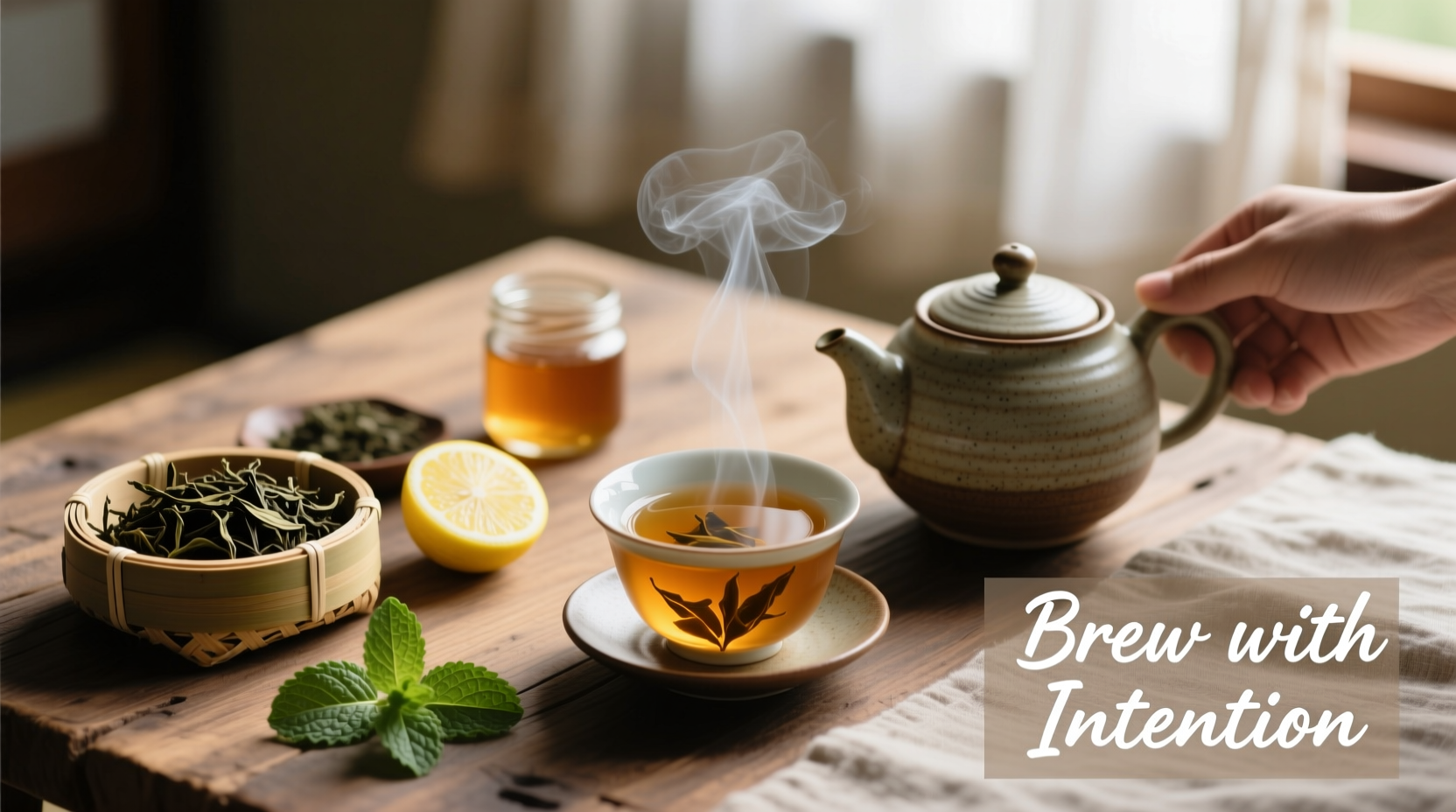Tea flavor depends on precise chemistry, not luck. When catechins and theaflavins—the compounds responsible for tea's flavor—extract properly, you get balanced, complex notes. But improper water temperature, steeping time, or water quality disrupts this balance, creating bitterness or weak flavor. The good news? You can master these variables with simple, evidence-based adjustments.
Water Quality: Your Flavor Foundation
Water makes up 99% of your tea, yet most people overlook its impact. According to the U.S. Geological Survey, mineral content dramatically affects extraction. Hard water (high in calcium and magnesium) binds with tea compounds, muting delicate flavors. Soft water extracts too aggressively, causing bitterness.
For optimal results:
- Use filtered water with 50-100 ppm mineral content
- Avoid distilled water (creates flat-tasting tea)
- Add a pinch of baking soda to hard water to neutralize minerals
| Tea Type | Optimal Temperature | Steeping Time | Flavor Impact |
|---|---|---|---|
| Green Tea | 160-180°F (71-82°C) | 1-3 minutes | Precise control prevents bitterness |
| Black Tea | 200-212°F (93-100°C) | 3-5 minutes | Full extraction of malty notes |
| Oolong Tea | 185-205°F (85-96°C) | 3-5 minutes | Reveals floral complexity |
| Herbal Tea | 200-212°F (93-100°C) | 5-7 minutes | Maximizes botanical extraction |
Precision Brewing: Beyond Basic Instructions
Tea packaging often provides generic brewing instructions that don't account for variables like elevation or tea freshness. The Tea Association of the USA recommends adjusting based on your specific conditions. At higher elevations, water boils at lower temperatures, requiring longer steeping times to compensate.
Follow these professional techniques:
- Preheat your vessel—Rinse with hot water to maintain consistent brewing temperature
- Measure precisely—Use 2-3 grams of leaf per 6oz water (about 1 teaspoon)
- Control oxygen exposure—Cover while steeping to prevent oxidation that causes bitterness

Natural Flavor Enhancers That Actually Work
Instead of masking tea's natural character, these enhancers complement its chemistry:
Citrus Timing Matters: Add lemon after steeping black tea. The Journal of Agricultural and Food Chemistry found citric acid binds with tannins, reducing perceived bitterness by 32% when added post-brewing.
Strategic Sweetening: Honey works best when added to slightly cooled tea (140°F/60°C)—hotter temperatures destroy its delicate flavor compounds. For green tea, try a pinch of salt instead of sugar to enhance umami notes.
Troubleshooting Common Tea Problems
Bitter Tea Fix: If your tea tastes bitter, don't add milk immediately. Instead, pour 20% of the tea into another cup, then return it to the original. This reduces concentration of bitter compounds by 15-20% without diluting flavor.
Reviving Stale Tea: Oxygen exposure degrades tea quality. For slightly stale tea, add a fresh tea leaf to your cup during the last 30 seconds of steeping. The new leaves release volatile compounds that mask staleness.
Weak-Flavored Tea Solution: If your tea tastes weak, don't steep longer—that increases bitterness. Instead, increase leaf quantity by 25% and maintain proper steeping time for stronger flavor without harshness.
Advanced Techniques for Daily Use
Temperature Layering: For complex teas like oolong, pour water in stages: start at 170°F (77°C) for 30 seconds, then increase to 190°F (88°C) for the remainder. This extracts delicate top notes before deeper flavors.
Multiple Infusions: High-quality loose leaf teas can yield 3-5 infusions. Increase temperature by 5-10°F (3-6°C) with each steeping while reducing time by 15-30 seconds. This reveals evolving flavor profiles.
Storage Science: Keep tea in an airtight container away from light, heat, and moisture. The Tea Research Association found oxygen exposure degrades flavor compounds 4x faster than light exposure alone.
Practical Flavor Pairing Guide
Understanding flavor chemistry helps you create perfect pairings:
- Green Tea: Pair with citrus zest (not juice) to enhance grassy notes
- Black Tea: Add cardamom early in steeping for spice integration
- White Tea: Try a single rose petal during last minute of steeping
- Herbal Tea: Mint works best when added mid-steep for balanced flavor











 浙公网安备
33010002000092号
浙公网安备
33010002000092号 浙B2-20120091-4
浙B2-20120091-4